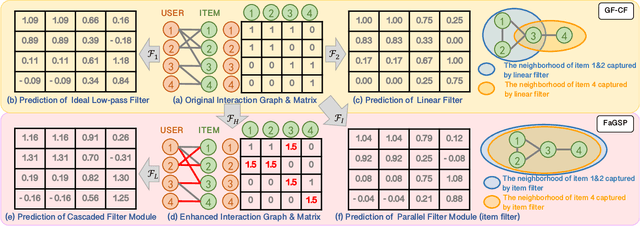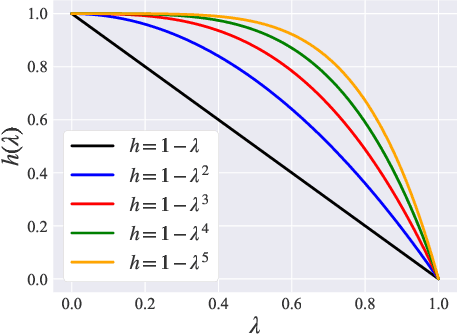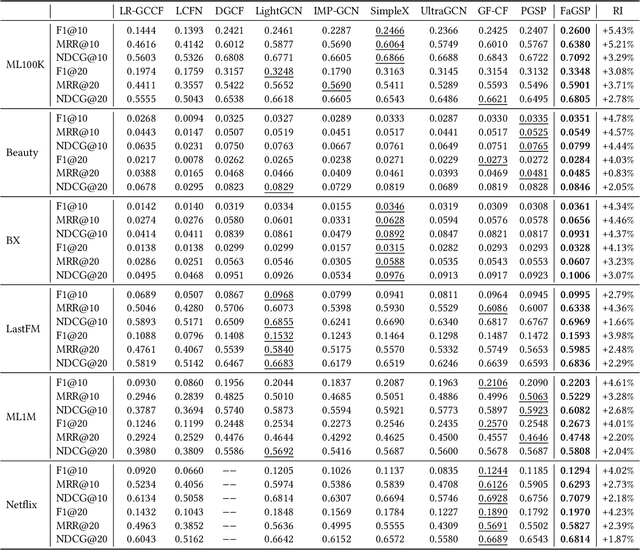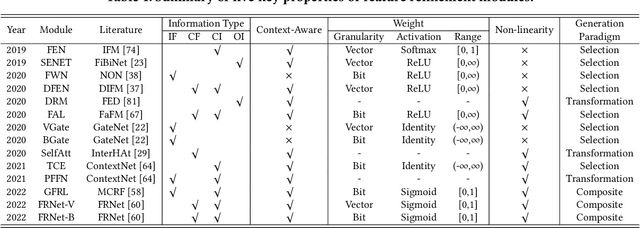Li Shang
AnalogSeeker: An Open-source Foundation Language Model for Analog Circuit Design
Aug 14, 2025Abstract:In this paper, we propose AnalogSeeker, an effort toward an open-source foundation language model for analog circuit design, with the aim of integrating domain knowledge and giving design assistance. To overcome the scarcity of data in this field, we employ a corpus collection strategy based on the domain knowledge framework of analog circuits. High-quality, accessible textbooks across relevant subfields are systematically curated and cleaned into a textual domain corpus. To address the complexity of knowledge of analog circuits, we introduce a granular domain knowledge distillation method. Raw, unlabeled domain corpus is decomposed into typical, granular learning nodes, where a multi-agent framework distills implicit knowledge embedded in unstructured text into question-answer data pairs with detailed reasoning processes, yielding a fine-grained, learnable dataset for fine-tuning. To address the unexplored challenges in training analog circuit foundation models, we explore and share our training methods through both theoretical analysis and experimental validation. We finally establish a fine-tuning-centric training paradigm, customizing and implementing a neighborhood self-constrained supervised fine-tuning algorithm. This approach enhances training outcomes by constraining the perturbation magnitude between the model's output distributions before and after training. In practice, we train the Qwen2.5-32B-Instruct model to obtain AnalogSeeker, which achieves 85.04% accuracy on AMSBench-TQA, the analog circuit knowledge evaluation benchmark, with a 15.67% point improvement over the original model and is competitive with mainstream commercial models. Furthermore, AnalogSeeker also shows effectiveness in the downstream operational amplifier design task. AnalogSeeker is open-sourced at https://huggingface.co/analogllm/analogseeker for research use.
Bidirectional Knowledge Distillation for Enhancing Sequential Recommendation with Large Language Models
May 23, 2025Abstract:Large language models (LLMs) have demonstrated exceptional performance in understanding and generating semantic patterns, making them promising candidates for sequential recommendation tasks. However, when combined with conventional recommendation models (CRMs), LLMs often face challenges related to high inference costs and static knowledge transfer methods. In this paper, we propose a novel mutual distillation framework, LLMD4Rec, that fosters dynamic and bidirectional knowledge exchange between LLM-centric and CRM-based recommendation systems. Unlike traditional unidirectional distillation methods, LLMD4Rec enables iterative optimization by alternately refining both models, enhancing the semantic understanding of CRMs and enriching LLMs with collaborative signals from user-item interactions. By leveraging sample-wise adaptive weighting and aligning output distributions, our approach eliminates the need for additional parameters while ensuring effective knowledge transfer. Extensive experiments on real-world datasets demonstrate that LLMD4Rec significantly improves recommendation accuracy across multiple benchmarks without increasing inference costs. This method provides a scalable and efficient solution for combining the strengths of both LLMs and CRMs in sequential recommendation systems.
The Power of Graph Signal Processing for Chip Placement Acceleration
Feb 24, 2025



Abstract:Placement is a critical task with high computation complexity in VLSI physical design. Modern analytical placers formulate the placement objective as a nonlinear optimization task, which suffers a long iteration time. To accelerate and enhance the placement process, recent studies have turned to deep learning-based approaches, particularly leveraging graph convolution networks (GCNs). However, learning-based placers require time- and data-consuming model training due to the complexity of circuit placement that involves large-scale cells and design-specific graph statistics. This paper proposes GiFt, a parameter-free technique for accelerating placement, rooted in graph signal processing. GiFt excels at capturing multi-resolution smooth signals of circuit graphs to generate optimized placement solutions without the need for time-consuming model training, and meanwhile significantly reduces the number of iterations required by analytical placers. Experimental results show that GiFt significantly improving placement efficiency, while achieving competitive or superior performance compared to state-of-the-art placers. In particular, compared to DREAMPlace, the recently proposed GPU-accelerated analytical placer, GF-Placer improves total runtime over 45%.
Enhancing LLM-Based Recommendations Through Personalized Reasoning
Feb 19, 2025Abstract:Current recommendation systems powered by large language models (LLMs) often underutilize their reasoning capabilities due to a lack of explicit logical structuring. To address this limitation, we introduce CoT-Rec, a framework that integrates Chain-of-Thought (CoT) reasoning into LLM-driven recommendations by incorporating two crucial processes: user preference analysis and item perception evaluation. CoT-Rec operates in two key phases: (1) personalized data extraction, where user preferences and item perceptions are identified, and (2) personalized data application, where this information is leveraged to refine recommendations. Our experimental analysis demonstrates that CoT-Rec improves recommendation accuracy by making better use of LLMs' reasoning potential. The implementation is publicly available at https://anonymous.4open.science/r/CoT-Rec.
Enhancing Cross-Domain Recommendations with Memory-Optimized LLM-Based User Agents
Feb 19, 2025Abstract:Large Language Model (LLM)-based user agents have emerged as a powerful tool for improving recommender systems by simulating user interactions. However, existing methods struggle with cross-domain scenarios due to inefficient memory structures, leading to irrelevant information retention and failure to account for social influence factors such as popularity. To address these limitations, we introduce AgentCF++, a novel framework featuring a dual-layer memory architecture and a two-step fusion mechanism to filter domain-specific preferences effectively. Additionally, we propose interest groups with shared memory, allowing the model to capture the impact of popularity trends on users with similar interests. Through extensive experiments on multiple cross-domain datasets, AgentCF++ demonstrates superior performance over baseline models, highlighting its effectiveness in refining user behavior simulation for recommender systems. Our code is available at https://anonymous.4open.science/r/AgentCF-plus.
Mitigating Popularity Bias in Collaborative Filtering through Fair Sampling
Feb 19, 2025Abstract:Recommender systems often suffer from popularity bias, where frequently interacted items are overrepresented in recommendations. This bias stems from propensity factors influencing training data, leading to imbalanced exposure. In this paper, we introduce a Fair Sampling (FS) approach to address this issue by ensuring that both users and items are selected with equal probability as positive and negative instances. Unlike traditional inverse propensity score (IPS) methods, FS does not require propensity estimation, eliminating errors associated with inaccurate calculations. Our theoretical analysis demonstrates that FS effectively neutralizes the influence of propensity factors, achieving unbiased learning. Experimental results validate that FS outperforms state-of-the-art methods in both point-wise and pair-wise recommendation tasks, enhancing recommendation fairness without sacrificing accuracy. The implementation is available at https://anonymous.4open.science/r/Fair-Sampling.
Oracle-guided Dynamic User Preference Modeling for Sequential Recommendation
Dec 01, 2024



Abstract:Sequential recommendation methods can capture dynamic user preferences from user historical interactions to achieve better performance. However, most existing methods only use past information extracted from user historical interactions to train the models, leading to the deviations of user preference modeling. Besides past information, future information is also available during training, which contains the ``oracle'' user preferences in the future and will be beneficial to model dynamic user preferences. Therefore, we propose an oracle-guided dynamic user preference modeling method for sequential recommendation (Oracle4Rec), which leverages future information to guide model training on past information, aiming to learn ``forward-looking'' models. Specifically, Oracle4Rec first extracts past and future information through two separate encoders, then learns a forward-looking model through an oracle-guiding module which minimizes the discrepancy between past and future information. We also tailor a two-phase model training strategy to make the guiding more effective. Extensive experiments demonstrate that Oracle4Rec is superior to state-of-the-art sequential methods. Further experiments show that Oracle4Rec can be leveraged as a generic module in other sequential recommendation methods to improve their performance with a considerable margin.
Train Faster, Perform Better: Modular Adaptive Training in Over-Parameterized Models
May 13, 2024



Abstract:Despite their prevalence in deep-learning communities, over-parameterized models convey high demands of computational costs for proper training. This work studies the fine-grained, modular-level learning dynamics of over-parameterized models to attain a more efficient and fruitful training strategy. Empirical evidence reveals that when scaling down into network modules, such as heads in self-attention models, we can observe varying learning patterns implicitly associated with each module's trainability. To describe such modular-level learning capabilities, we introduce a novel concept dubbed modular neural tangent kernel (mNTK), and we demonstrate that the quality of a module's learning is tightly associated with its mNTK's principal eigenvalue $\lambda_{\max}$. A large $\lambda_{\max}$ indicates that the module learns features with better convergence, while those miniature ones may impact generalization negatively. Inspired by the discovery, we propose a novel training strategy termed Modular Adaptive Training (MAT) to update those modules with their $\lambda_{\max}$ exceeding a dynamic threshold selectively, concentrating the model on learning common features and ignoring those inconsistent ones. Unlike most existing training schemes with a complete BP cycle across all network modules, MAT can significantly save computations by its partially-updating strategy and can further improve performance. Experiments show that MAT nearly halves the computational cost of model training and outperforms the accuracy of baselines.
Frequency-aware Graph Signal Processing for Collaborative Filtering
Feb 13, 2024



Abstract:Graph Signal Processing (GSP) based recommendation algorithms have recently attracted lots of attention due to its high efficiency. However, these methods failed to consider the importance of various interactions that reflect unique user/item characteristics and failed to utilize user and item high-order neighborhood information to model user preference, thus leading to sub-optimal performance. To address the above issues, we propose a frequency-aware graph signal processing method (FaGSP) for collaborative filtering. Firstly, we design a Cascaded Filter Module, consisting of an ideal high-pass filter and an ideal low-pass filter that work in a successive manner, to capture both unique and common user/item characteristics to more accurately model user preference. Then, we devise a Parallel Filter Module, consisting of two low-pass filters that can easily capture the hierarchy of neighborhood, to fully utilize high-order neighborhood information of users/items for more accurate user preference modeling. Finally, we combine these two modules via a linear model to further improve recommendation accuracy. Extensive experiments on six public datasets demonstrate the superiority of our method from the perspectives of prediction accuracy and training efficiency compared with state-of-the-art GCN-based recommendation methods and GSP-based recommendation methods.
A Comprehensive Summarization and Evaluation of Feature Refinement Modules for CTR Prediction
Nov 08, 2023



Abstract:Click-through rate (CTR) prediction is widely used in academia and industry. Most CTR tasks fall into a feature embedding \& feature interaction paradigm, where the accuracy of CTR prediction is mainly improved by designing practical feature interaction structures. However, recent studies have argued that the fixed feature embedding learned only through the embedding layer limits the performance of existing CTR models. Some works apply extra modules on top of the embedding layer to dynamically refine feature representations in different instances, making it effective and easy to integrate with existing CTR methods. Despite the promising results, there is a lack of a systematic review and summarization of this new promising direction on the CTR task. To fill this gap, we comprehensively summarize and define a new module, namely \textbf{feature refinement} (FR) module, that can be applied between feature embedding and interaction layers. We extract 14 FR modules from previous works, including instances where the FR module was proposed but not clearly defined or explained. We fully assess the effectiveness and compatibility of existing FR modules through comprehensive and extensive experiments with over 200 augmented models and over 4,000 runs for more than 15,000 GPU hours. The results offer insightful guidelines for researchers, and all benchmarking code and experimental results are open-sourced. In addition, we present a new architecture of assigning independent FR modules to separate sub-networks for parallel CTR models, as opposed to the conventional method of inserting a shared FR module on top of the embedding layer. Our approach is also supported by comprehensive experiments demonstrating its effectiveness.
 Add to Chrome
Add to Chrome Add to Firefox
Add to Firefox Add to Edge
Add to Edge